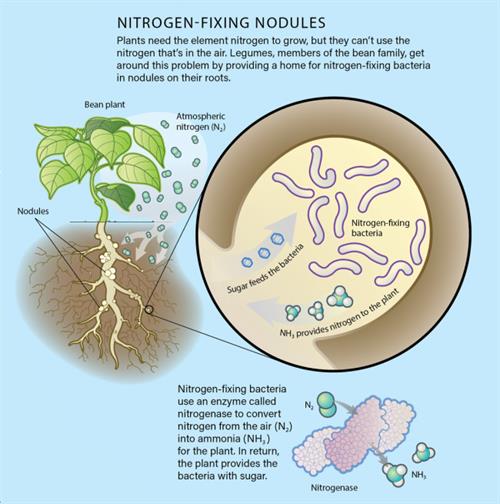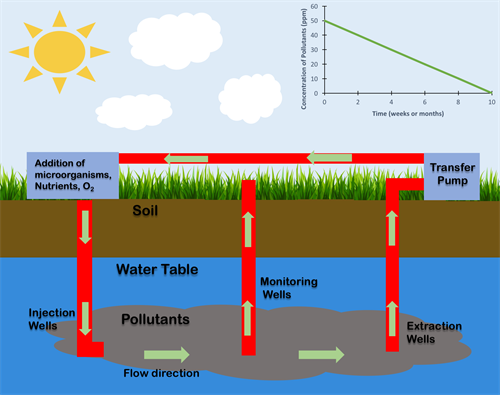PDF chapter test TRY NOW
Increasing the soil fertility:
Certain bacteria Nitrobacter, Rhizobium, and blue-green algae such as Nostoc convert nitrogen in the atmosphere into nitrites and nitrates. These nitrogen-fixing organisms take nitrogen from the atmosphere and fix it in the soil, which plants can quickly absorb. These microbes are commonly called biological nitrogen fixers. By recycling nutrients such as nitrogen, sulphur, and phosphorus, bacteria increase soil fertility.Cleaning the environment:
Have you ever seen huge dead animals or decayed plants disintegrate and vanish after a period of time? That happens because of the microorganisms.
Many microorganisms contribute to the natural cleaning of our ecosystem by decomposing dead organic waste from plants and animals and converting it to simple substances. Plants then use these compounds to acquire nutrients. Thus microorganisms can be used to degrade the toxic and odorous compounds, cleaning up the environment. Hence they are therefore called decomposers.
Video explaining the process of decomposition by microorganisms
Activity: To show that microorganisms decompose plant waste:
Procedure:
- Take two pots and fill each pot with soil.
- Label one as "A" and fill it with plant waste.
- Others should be labelled as "B" and put items like polythene bags, emptyglass bottles, and brokenplastic toys.
- Place both the pots aside and check back in 3 to 4 weeks.
Observation:
By the action of microbes in the soil will transform the contents of pot "A" into manure. However, there would be no improvement in pot "B" because microorganisms would not act on the materials in it. Microorganisms decompose plant waste and turn it into compost, but they do not decompose inorganic materials such as polythene, plastic bags and plastic toys.
Nitrogen fixation:
Plants require a lot of nitrogen. They cannot absorb nitrogen from the air like carbon dioxide. They need nitrogen in soluble form. In leguminous plants, absorption of nitrogen is facilitated by Rhizobium bacteria. This bacteria lives in the root nodules of leguminous plants. It converts gaseous nitrogen into a water-soluble form and releases it into the soil. Plants absorb this nitrogen in the soil for their growth. In return, Rhizobium bacteria get their food and shelter from the plant. Thus they have a symbiotic relationship. For farmers, this relationship is of great importance. If they grow grams, peas, moong, beans, and other legumes, nitrogenous fertiliser usage will reduce.

Picture showing the process of nitrogen fixation
- Algae produce oxygen (O_2) during the photosynthesis process. Microalgae provide more than 75% of the oxygen needed by animals and humans on a global scale.
- Certain bacteria like Bacillus are capable of decomposing waste and sewage in the water. Hence, they aid to clean water naturally.
Bioremediation:
The process of removing pollutants from a highly polluted environment, such as municipal water tanks, sewage water, or oil spills in water, is known as bioremediation. Pseudomonas putida, Dechloromonas aromatica, and Deinococcus radiodurans are examples of microorganisms used in their natural form. It is a biotechnical waste management method that uses no harmful chemicals to protect the earth and promote a sustainable environment.

Picture showing the process of bioremediation
- Certain bacteria aid in the decomposition of plant and animal wastes, resulting in biogas production. Biogas is used as a fuel for cooking and illumination in villages and remote areas.
- Some bacteria are also used in the manufacturing industry.
In the jute industry, for example, bacteria extract jute fibres from the plant's stalks. These fibres are spun into yarns, which are then woven into items like bags, sacks, and mats.
Important!
Reference:
https://intrinsyxbio.com/how-will-nano-technology-change-modern-medicine/
https://upload.wikimedia.org/wikipedia/commons/4/49/In_Situ_Bioremediation.png
